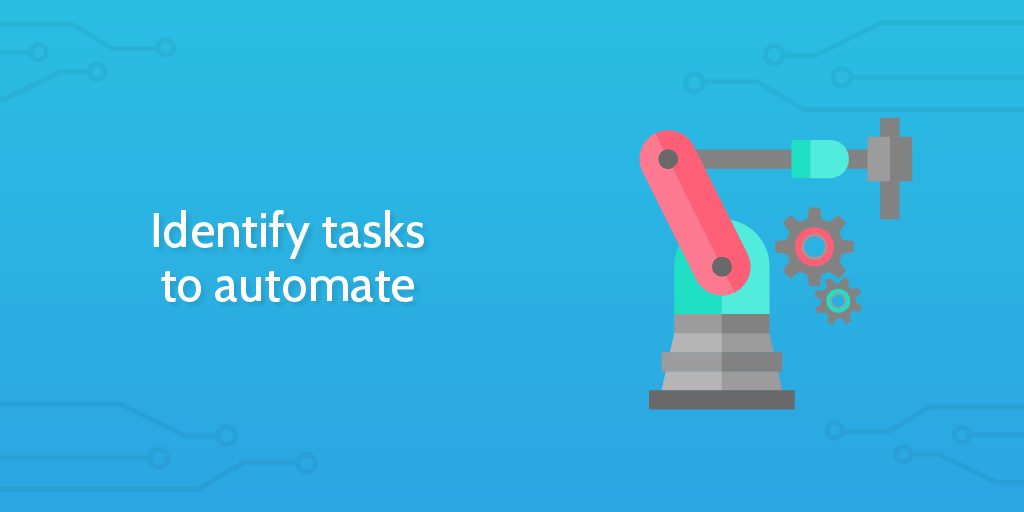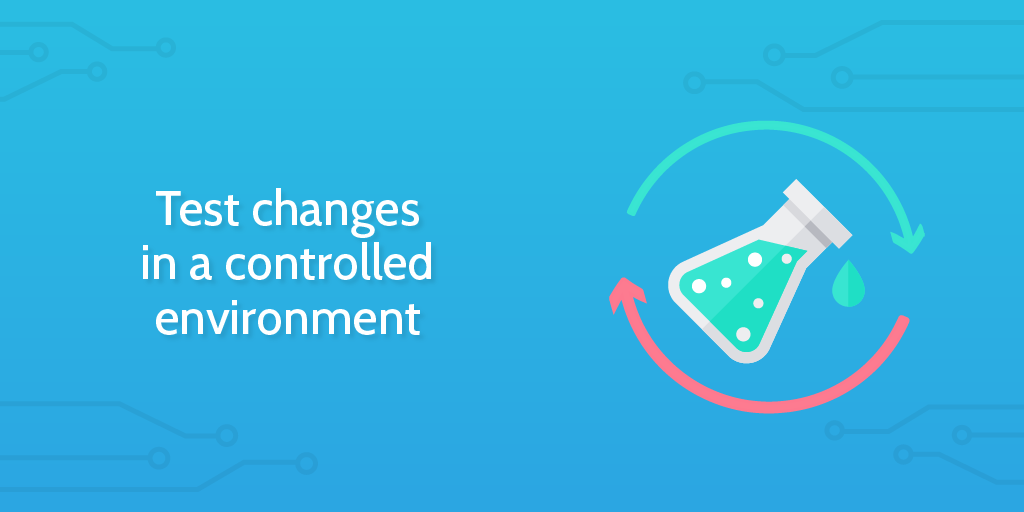— June 21, 2017

Apple is well-known for being innovative and immensely successful, to the point where the company is worth $ 750 billion (and counting). However, without a healthy dose of workflow analysis they would’ve crumbled under their own business model back in the late 1980s.
“We could no longer afford the limitations that went with our product development processes… The lack of a formal new product development process led to confusion, wasted time, and often caused project teams to ‘re-create the wheel’” – Jackie Streeter (then VP of Engineering at Apple), Apple Rethinks Core Process: Improves Cycle Time

The simple truth is that any company (no matter the size or success) needs to regularly review its workflows and processes in order to keep them up to date and efficient. Tasks should be updated, improved, and automated where possible to save time and money, but without using the best workflow management software around to analyze and improve your business practices, your entire business model itself can prevent your success.
We’ve talked many times about topics like business process analysis and process improvement here on the Process Street blog, but today we’re diving deep into workflow analysis – of how to analyze your methods as a whole, rather than a specific process. This post will cover:
- What workflow analysis is
- Why you should care about it
- How to find the areas which most need improving
- How to analyze your workflows
- Why it’s important to collaborate with the relevant teams to make improvements
After all, Apple didn’t get to be the tech giant it is by standing still, just as you won’t reach your goals by doing the same.
What is workflow analysis?
Workflow analysis is a fancy term for analyzing your business and picking out faults. You’re boosting your efficiency by improving and automating your business model as a whole, rather than an individual process.
As for the difference between a workflow and a process, many seem to think the terms are interchangeable, but this isn’t the case. Workflows (like the one below) are a collection of processes and events which fulfill a need or purpose, whereas processes accomplish a single goal. Workflows are flexible guidelines while processes are defined steps to follow.

Think of it this way; when carrying out your tasks, when was the last time you stopped to think about why you were doing them in that way? How do you know you’re doing them correctly? Without analyzing your workflows, the answer is that you have no idea, and could just as easily be doing more harm than good.
Think of it as business process analysis, but with a wider focus. By talking to everybody involved in your company, you can get an accurate view of what their workflows are and how to improve them.
It’s important to note that workflow analysis does not involve fine tuning individual processes. Instead, it’s a measure to identify the key areas that need improvement and the various ways you could tweak them. You’re improving the higher-level framework rather than a specific process (although there is certainly some overlap).
Why is it important?
Analyzing your workflows lets you cut out unnecessary waste, saving time and money by automating tasks that don’t require human input. Not only that, but at the same time you’re identifying core faults in your processes which have become normal practice.
In other words, you’re taking a look at the way your company works and improving it. This might sound like a lot of effort for a small efficiency boost, but in the long run you’ll gain exponentially more than you put into performing the tune up. Even small boosts to efficiency build up over time – if an employee takes five minutes to cross the office to use a printer and has to print something off every day, that’s almost an hour of productive work time you could save every week per employee.
That being said, you’re only human. It’s impossible to be 100% efficient, and trying to do so would waste more time than you end up saving. However, by making this part of your team’s regular meetings you can keep wasted time and human error to a minimum and catch core faults in your business practices before they do too much damage.
How to analyze your workflows
Define your area of improvement

First, you need to define a set area of your company which you’ll analyze. If you try to tackle every workflow you have at once you’ll only drown under the effort, so splitting up your efforts like this will help to make the entire thing more manageable.
Do this by taking stock of the performance of your company as a whole, and then finding the section which most needs improvement. The most common way you’d do this is to examine your teams’ key performance indicators (KPIs) and compare that to the resources they are using.
Go through as many sections of your company as you can (you’ll want to improve every workflow eventually anyway), then pick the one which most needs improvement.
Get the senior staff involved

Next you need to get the senior staff involved. This is vital, as they will likely be both more experienced than you with your selected team’s processes and workflows, and more capable of ensuring the continued success of the changes you make. Much like with visual process innovation, if you involve the teams who carry out the processes you’re improving, the changes you make are far more likely to take hold.
Get your team’s managers and senior members together and discuss which areas they feel could most benefit from improvement. The changes you make won’t necessarily be in the areas they suggest, but nonetheless, they are a good starting point.
Find your documented processes

Once the senior staff are on board, you need to find the documented processes for the team you’re looking at. Ideally, the team will have fully documented processes for every test they perform, and so it will be easy to identify where they are going wrong.
Depending on your process documentation software, you might need to do some digging to find the processes relevant to the team. Alternatively, if you don’t already have documented processes, you’ll want to link up with your team and create them.
Check that the processes are accurate

Once you find them, you need to check with the rest of the team that the processes are accurate. Much like with process innovation, the documented processes shouldn’t be your ideal method, but instead the one which is actually followed – recording an ideal version of your actual process will only hurt you later on when a step is skipped.
If your processes aren’t accurate, make sure that changes are made to reflect the actual steps which are carried out.
Analyze your team’s input and output

You have your processes, so now it’s time to look at the input and output of the team across them. This will greatly depend on the team and the tasks they perform, but in general you should take the time, money, and resources put into the team and compare it against their success metrics.
In turn, this will tell you whether you need to focus on a specific workflow or whether your efforts would give a greater return elsewhere. For example, if you find that your team (or a specific team member) is performing well, chance are that you won’t stand to gain much by focusing on that section of their workflow.
Identify largest area for improvement

Ok, so you’ve got your team and the processes they use analyzed. Now all you need to do is identify the largest area for improvement within them. take the input and output of the team across their processes and use that to highlight problem areas which stand to gain more by being improved or automated.
Note that you need to know both what the worst performing processes are and the largest points of friction linking them together as a workflow. A perfectly good process can fail miserably in practice if factors such as communication between the relevant team members break down.
Right now you don’t need to know what improvements to make, you just need to identify the areas where improvements are most required.
Identify tasks to automate

The other section of workflow analysis is identifying the tasks which can be automated to save your team both time and money. To do this you should take a look at the tasks your team is currently performing and note any which don’t require human input.
We’ve thoroughly covered business process automation in the past, so I won’t bore you with the details, but if a task has a set number of possible inputs and outputs (and especially if that task is regularly repeated) it is a prime candidate to be automated. For example, if the invoices you handle are sent in a set format, you could create a form to capture the variable data (client name, amount, etc.) and then automatically generate the invoice from that data set.
Other improvements might seem like the more logical way to up your efficiency, but by far the best way to save time and money is to automate tasks. It might take a little setup, but handing off your tasks to a computer cuts them entirely out of your schedule, which has a far greater impact than a small efficiency boost.
Discuss improvements with the relevant team

Once you have the core tasks you need to improve and automate, you need to discuss said changes with the team that the processes are relevant to. If you’re automating your social media sharing then you should talk to the marketing team, and so on.
This once again helps them to feel like they are co-authoring the new and improved workflow, and so they will be far more motivated to encourage the changes to stick. Not only that, but by collaborating with the team and suggesting improvements together you can take advantage of their in-depth expertise in their various fields.
In other words, you can save yourself some time and effort by getting multiple informed opinions, more accurately predict what the best improvements will be, and where automation will have the greatest impact.
Test changes in a controlled environment

Much like when improving your processes, you want to test the changes you make to your workflows before implementing them in a live environment. This should be done while collaborating with the team who will use the workflow since they will be more alert to the problems faced in real-life usage.
Monitor the performance of the new workflow versus the old using your KPI’s, and do the same for the newly automated tasks. Automation can be difficult to implement and, if done incorrectly, much can go wrong without you knowing about it (since humans are taken out of the equation), so be sure to test yours thoroughly.
Deploy your changes

If all goes to plan, go ahead and deploy your changes with the teams. This is where working with the senior staff will pay off, since they will be able to make sure that their team sticks to the improvements and carries out the new version of their workflow.
Make sure everyone is following the process, any documentation is updated to reflect the new workflow, and that any old versions of your processes and workflows or filed away where your team can’t stumble across them easily.
Measure results and repeat

As with any good process improvement program, your workflow analysis should become a regular habit. There’s no one rule for how often you should analyze your workflows, but in general try to do it at least once a month.
The easiest way to do this is to make it part of your team meetings, since this gets both out of the way at the same time.
Let workflow analysis guide your success
The key thing to remember with workflow analysis is that it’s not a one-time trick. In order to consistently stay at the top of your game you should be reviewing your workflows regularly, even if you find that everything is working optimally. After all, it’s better to know that your company is doing everything it can to succeed than to assume and be proven wrong.
Having said that, there’s nothing to say that you can’t do the same for your own personal workflows. By putting your own daily routine under the same scrutiny you can improve your productivity and get more done in less time, leaving you with more time to either work on what matters or do the things you love.
What changes have you made to your workflows lately (professional or personal)? I’d love to hear from you in the comments.
Business & Finance Articles on Business 2 Community
(114)
Report Post







